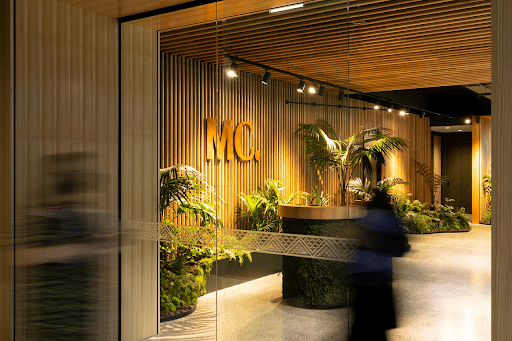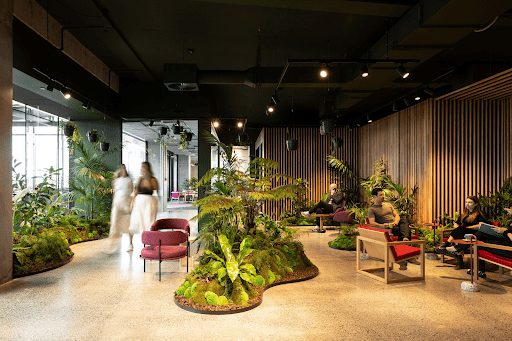The term biophilic is becoming a lot more popular when describing workspaces these days, and there are a number of reasons that this design movement is gaining momentum.
But what exactly is it and why should the modern workplace consider biophilic elements in their design? Biophilic design is defined as a concept used within the building industry to increase occupant connectivity to the natural environment through the use of direct nature, indirect nature, and space and place conditions. As more people return to the workplace, we are seeing how significant biophilic elements can be. Employers are keen to explore and upgrade the office environment for their people so they are just as comfortable at work as they have been at home. This is bringing forth a new norm and creating a post-pandemic standard that integrates biophilia amongst other things, within the workplace.
But biophilia is more than just an aesthetic philosophy—biophilic design has been found to support cognitive function, physical health, and psychological well-being. The concept of incorporating biophilic design into offices is to encourage the connection between humans and nature, as well as promote staff wellness and productivity.
Today more so than ever, employees need places and spaces to connect, engage, and identify with. To embrace biophilic design, we need to reimagine how we engage with and operate in the workplace, promote learning and collaboration, while placing employee health and wellness at the forefront of the design.
Implementing biophilic design doesn’t have to be a major undertaking. Guided by social ecologist Stephen Kellert’s 6 principles, any organisation could start by making minimal changes to a space, which on its own could impact the environment and users positively.
These biophilic design principles include:
• Environmental features
• Light and space
• Natural shapes and forms
• Natural patterns and processes
• Place-based relationships
• Evolved human-nature relationships
A good place to start incorporating biophilia in the workplace is to embrace the first three principles. Adding greenery, making better use of daylight, utilising natural ventilation, and adding water features within a space can help bring some of nature’s key elements into the office.
The Modern Office team recently attended Worktech, and one of the inspiring examples of biophilia in the workplace was from law firm Meredith Connell, who created a life-sized terrarium for their Auckland office.

A large portion of MC’s staff are Generation Z, so creating an environment that appealed to this age group was a key driver in their decision making. They maximised the social aspects of workspaces by creating a lunchroom/staff area for their team to socialise and collaborate in, with soft seating to relax in.

If you’re considering refreshing your environment, here are our tips on simple ways to incorporate biophilic elements into your workplace:
• Expose yourself to plants indoors. These planters and plant walls can quickly add greenery to corporate spaces.
• Let natural light in wherever possible, or get outside and experience it during the day.
• Listen to nature sounds.
• Use natural shapes and forms in your furniture choices. Our Mello sofa or chair options like Ava introduce softness and curves to spaces that traditionally have harsh straight lines.
• Bring people together. Create a space within your office that encourages human contact and collaboration. Employees crave this especially after the pandemic, and they want spaces that are reminiscent of their homes where friends congregate.
If you would like some advice on refreshing your workspace for renewed energy this spring, get in touch with our team today.
